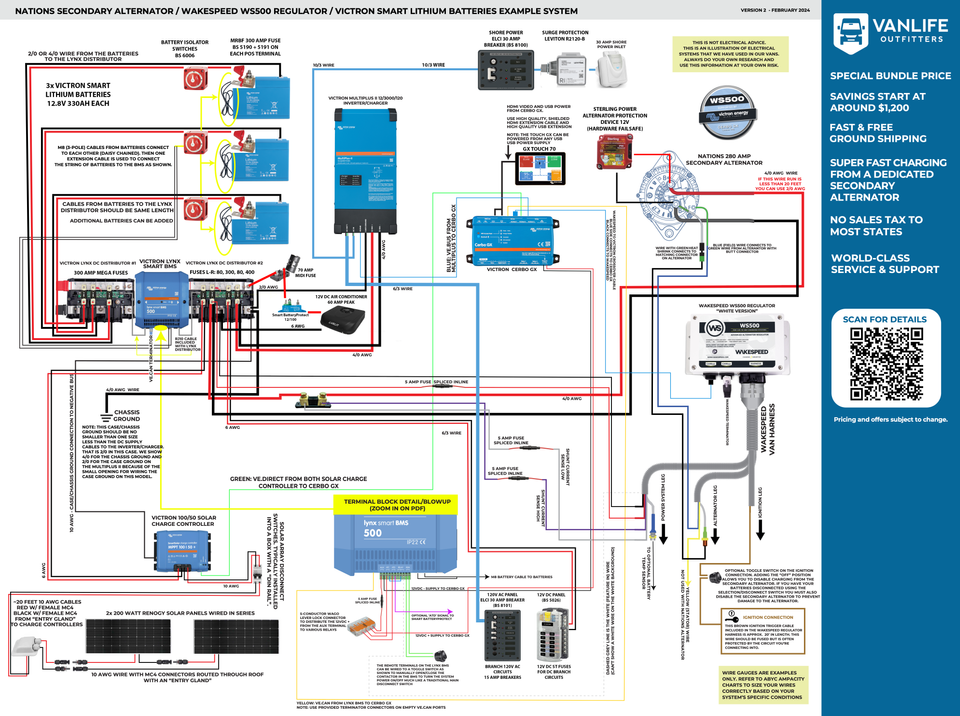Electrical System - Part 1

By far the most complicated system for the van is the electrical design. Harking back to the original goals, it needs to be self-sufficient without having to plug-in to some campsite electrical spigot.
That requires a ton of planning - and frankly expertise beyond my 'software +5V' we're good digital world I've spent 35 years in. Analog electricity? Power supplies? I was completely naive to how difficult simply turning on/off a circuit can be after a career of 1's and 0's. But what a huge (forced) opportunity for learning how this all works. An old colleague still has "Forever Learning" as his moniker and I feel simpatico.
So, above is the schematic of the system. I started with a design from Vanlife Outfitters and then made changes as necessary.
That's a lot of detail. The high level summary is we have a giant battery bank of 3 lithium batteries totaling over 12.6 kwh of power. That should be plenty to run the DC air conditoner for a day or two depending on compressor cycling. Our van has space for, but did not come with a factory 2nd alternator. That's a huge plus because it lets me install my own high amperage 2nd alternator and have complete control over it via the Wakespeed WS500.
We have a little bit of solar (400 watts) on the roof which will help offset the daily parasitic loads of the peplink router and other miscellaneous. It also qualifies the electrical system for federal tax credits.
The entire rai·son d'ê·tre of the custom van build over anything we could buy from Winnebago, etc. is massive recharging ability from the custom alternator and the sheer bank size. We should get 150 - 230 amps of 12V DC just driving around a little to a trail head or other exploration. Even an hour of doing that per day should be good and in theory we reach the nirvana of 'never have to plug the van in' anywhere. Solar plus a bit of driving around is completely self-sufficient. That's the theory anyway - will update as we get real world experience soon.
You'll see that most of the system use Victron Energy components - a well respected brand, especially in the boat industry. All of the wiring and connector terminals we've used are Ancor brand from authentic resellers (not just rando Amazon ones). The sheer amount of power in this cabinet has me being extra careful on every connection point. An electrical induced fire is by far the largest risk to the van. At this point, I can't imagine starting over after the countless hours sunk into the project already. I'm considering a fire suppression device like a Blazecut T100E, but waiting to see how the final cabinet enclosure looks.
Member discussion